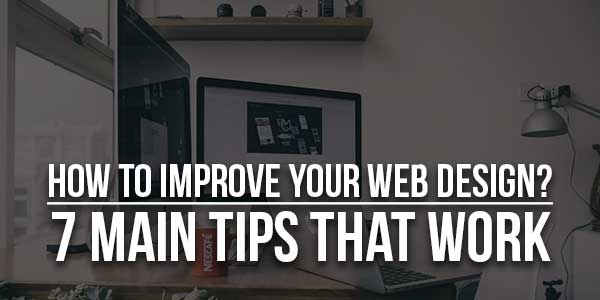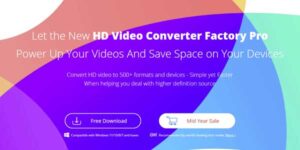
A high-quality website is a key to any brand’s success in the digital space. Without this factor, it is impossible to imagine the development of a modern company. That’s why websites have gone from using a difficult way of presenting yourself online to becoming a massive trend. Over the past few years, a lot of platforms for site creation have become widely available which can’t help but increase the number of low-quality products.
In addition, many fake experts are left and right creating poorly designed websites. Avoid common mistakes and focus on a few key tips to get the most out of your online brand. In this article, we will discuss these two areas to get a comprehensive understanding of the issues that can arise in the process of making better decisions.
Table of Contents
3 Main Mistakes During Web Site Creation:
- Relying solely on visual content. Unlike graphic design web design requires a sophisticated approach. When building a website it’s not enough just to focus on the look of the pages and icons. Don’t forget to provide user-friendly features. Without usability, a website is just a pretty image with no effect.
- It lacks logical structure. Even in the absence of other critical errors, this error can have a very negative impact on your site’s traffic. In general building, a website should start with a structure so that the finished product doesn’t have to change completely. Make sure everything is logically divided into categories and subcategories and there are no duplicate pages. These errors affect the usability of the website and users may not intuitively know where to look for specific information. Also if the structure is wrong the search engine will not be able to understand which page to decide on.
- Lack of compatibility between browsers. We have heard a lot about the importance of adapting your website to different devices and screen formats. However, there is another category to consider for proper formatting. The appearance of a website depends on how it is rendered in a particular browser. Due to the lack of cross-browser functionality users often leave the site in search of a suitable option. To avoid this problem find popular browsers in your area and create a site for each.
Considering all the important points most developers start thinking about how they can improve the finished site. There are some tips in this section whose effectiveness should be verified based on your specific experience. Not everyone has the same recipe but there are points you can work on to increase traffic to make your site easier to use and look better. We have collected such tips in this article.

7 Tips to Boost Your Web Design:
- Increase page loading speed. This tip is all about design and appearance. But as we mentioned, a site is a complex product that requires work from all parties. Adequate download speed is especially important for the mobile version where issues often appear. To reduce the users waiting time you need to optimize the image, clean the homepage of unnecessary categories and buttons and use redirects only when necessary. So loading speed still depends on intelligent page design and efficiently configured functions.
- Clear the page of unnecessary content. All the necessary information is located on the site so that when it appears – the work is done. It’s often the other way around and you have to work harder to save only the really important data. Many graphic or animation elements prevent the user from understanding the important information on the page. Also, think carefully about the number of pop-ups and pulsating buttons. We recommend not abusing these tools but using design to draw attention to key points.
- Take your onsite search system to a new level. We all know the basic tips for setting up a search but now it’s time to do something special. Try implementing a self-selection experience. With this tool, users can answer specific questions about what they are looking for on the site and get personalized choices for products, service descriptions, pricing templates, etc. Visit all categories on the site or contact online support. Users quickly understand what they need and which pages help them find it. Tools like this aren’t basic but a personal approach like this can help your site differentiate itself from its competitors.
- Develop your brand style. Providing well-defined graphic colours and templates to house the essential elements of the website makes the website easier to work on and prevents the use of unnecessary items. There are many platforms in this field like MasterBundles where you can find many ready-made solutions based on which it is easy to build your style. This approach will not only have a positive impact on the appearance of your website but will also increase user recognition of your brand.
- Don’t forget to keep testing. A website should not be a static tool like any other part of your business. This is one of the most transformative aspects of endless work. Continuous testing is therefore essential for the most effective design and functionality. Checking your site on a weekly or bi-weekly basis will help you spot any problematic issues and monitor how their improvements affect the performance of your pages. You can use A/B testing methods to compare two versions of your website and show what’s wrong. Also, update the information so that users see only the latest data.
- Work with fonts and colours to your advantage. We have talked about many functional aspects and in the end, it is worth mentioning the visual option. For the site to fulfil its function it is important to sufficiently attract users’ attention. You can find a lot of different unique font solutions on MasterBundles. This is not only thanks to the help of the action button to the action but also through the correct implementation of the visuals. Or use the principle of visual hierarchy. Important elements and information should be highlighted in strong or big bold colours. The smaller it is the smaller the font size and the less active colour selection needed. This method helps the user to identify the information he needs and does not require drastic changes in the initial thought process.
- Work on the home page. The latest trend in creating homepages is the ability to scroll down for long periods. This page structure keeps users on your site longer and introduces them to important information more effectively. Additionally, the long homepage expands your realm of possibilities in terms of additional information and location changes. After drawing the start page it is easy to place all necessary elements and leave room for graphic fills or blank areas. In turn, users will be able to get a complete picture of your company’s status.
Conclusion:
There are many tips for designing an effective website. You can choose between them only the ones that are suitable for your business and it is important to match your vision for the design concept. The tips collected in this article are universal and intended for personal and creative use. Don’t forget about functional testing after all the extra innovations and always keep your unique style.

 About the Author:
About the Author:
















Be the first to write a comment.